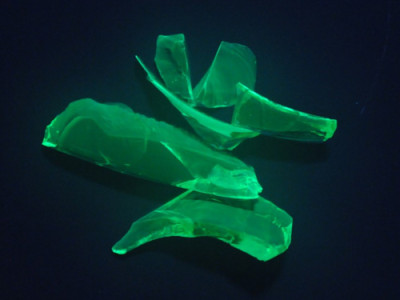Glass
Identification
Locating potential glass particles is not necessarily a trivial matter and it often requires the meticulous examination of large quantities of dust, debris, or loose product. Once isolated, the identification of a material as glass is the first step in our investigations as certain substances can be easily mistaken for glass.
Forensic Comparisons
There are numerous methods for comparing glass samples. Large numbers of particles can screened through the use of immersion oils, while more exacting comparisons are made by determining refractive index (GRIM measures refractive index to 0.00002) and the presence of trace elements (micro-XRF). Both of these techniques have been approved as ASTM methods and Microtrace was involved in the preparation of the ASTM XRF method.
Sourcing
The source of a glass fragment may be constrained or identified on the basis of numerous factors including shape, surface texture, elemental composition, and refractive index. Understanding the discriminating powers of these features permits classification and source identification for glasses ranging from common containers to exotic specialty glasses. Microtrace scientists have conducted research on sourcing glasses from wine bottles to cell phones.
Failure Analysis
Imperfections and inclusions in glass can be identified by a combination of polarized light microscopy, Raman spectroscopy, scanning electron microscopy. Fine, delaminated particles of glass can be identified and characterized by transmission electron microscopy and field emission scanning electron microscopy.
Related Standardized Methods: ASTM E1545, E1640, E1967, E2330, E2926, E2927
How May We Help You?
Contact usto discuss your project in more detail.








